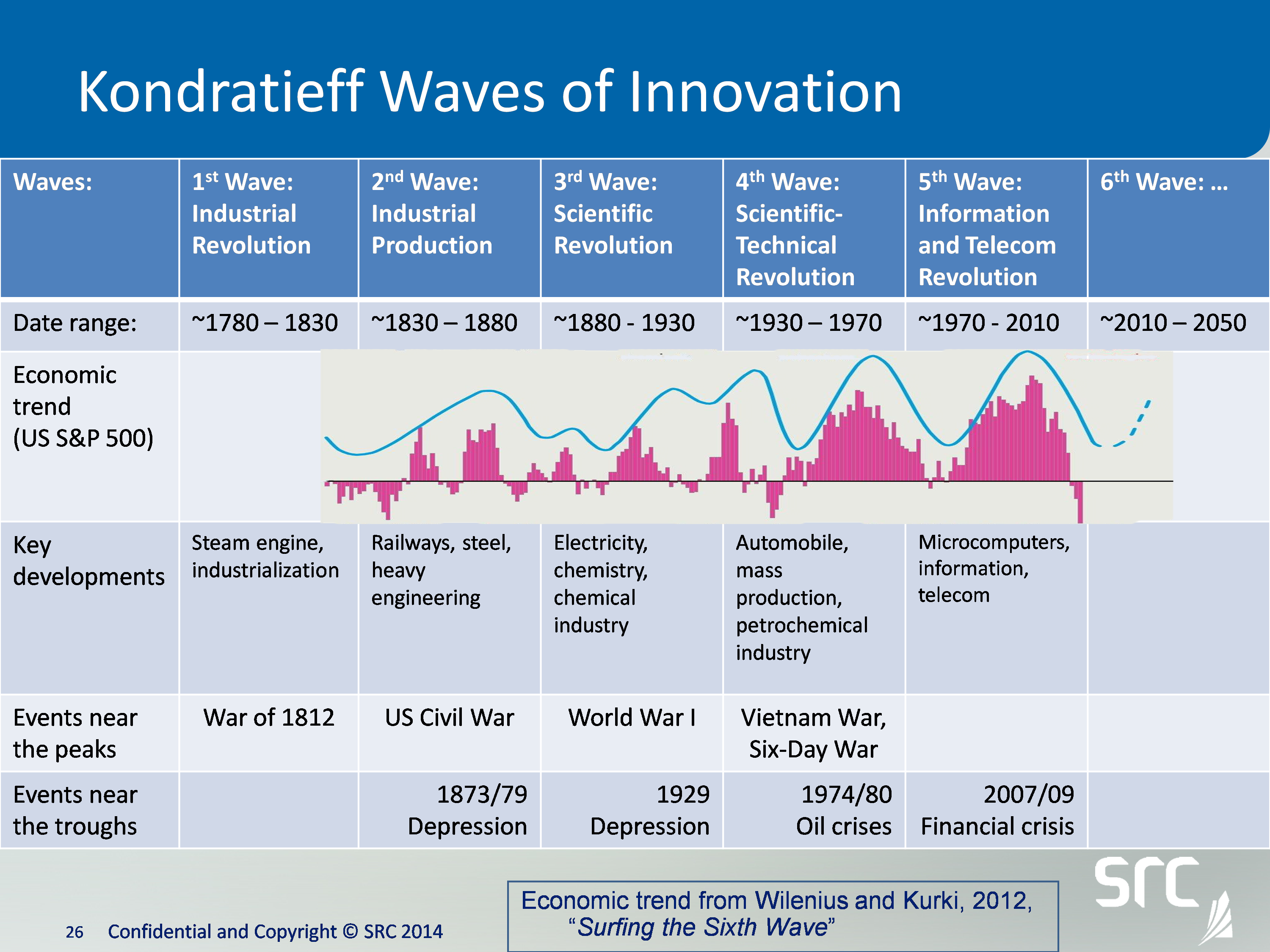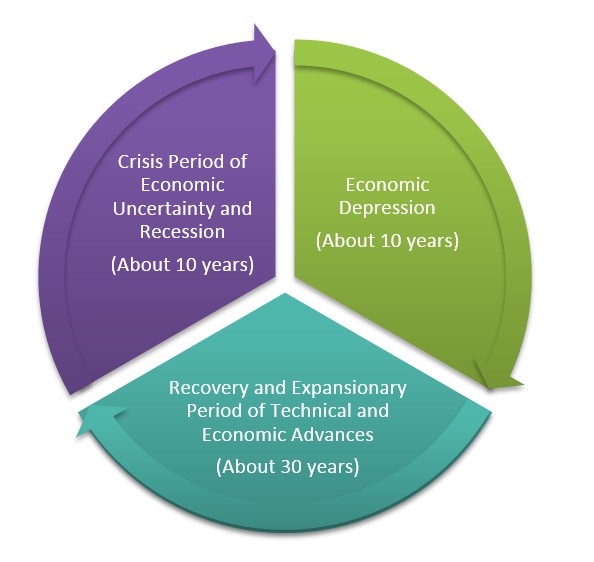“Innovation Insight” is a blog series written by SRC’s President Emeritus Dr. Laurier Schramm, which aims to shed light on the importance of innovation in driving economic, societal and environmental growth.
Innovation isn’t a linear or even a regular process. In 1925, Nikolai Kondratieff proposed that economies tended to go through 50-year cycles, called Kondratieff Waves:
Waves of Change
Kondratieff Waves have, at their heart, periods in which a number of key technological (as well as social/political and economic) developments enable bursts of disruptive product or service innovations, fuelling a sharp increase in industrial, and therefore economic, growth. These waves of change also carry with them the seeds of the next wave so the cycles repeat, apparently with periods of approximately 40 to 60 years.
Historically, the development of inventions into innovations, and individual innovations into clusters of innovations, seems to require one or two Kondratieff Waves. The reason for needing two waves is that sometimes innovations occur in the marketplace during one cycle but only become “mainstream” or “catch the wave” in the following cycle. This means that the lag between invention and innovation, and between individual innovations and waves of innovations, can easily range from 40 to 120 years. (Note: this does not take into account the lag between discovery and invention.)
Sixth Wave: The Present
It’s been fairly widely suggested that the world is presently in the “Sixth Wave” of Kondratieff cycles. The technological drivers likely lie in carryovers from the previous wave, such as digitization and computing power, plus newer areas:
- Environmental technologies
- Biotechnology (including genetic engineering)
- Nanotechnology
- Robotics
- Health technologies
Some of the associated social changes may be the aging of the population, increases in the size of the global “middle class,” and the numbers of workers displaced by automation (i.e., robots). Some of the associated environmental changes may be climate change and diminishing availability of non-renewable natural resources.

In Saskatchewan, with our strong natural resource base, an example of a sixth wave transformation could be the development of wood-based polymers for use in manufacturing products such as toothpaste, drugs, containers, and clothing. This could represent a major (positive) disruption in the forest products industry resulting in higher value-added manufacturing, which could dramatically improve the forest sector economy.
Seventh Wave: Future Outlook
Looking even further into the future, some features of an eventual Seventh Wave might include the merging of technology and intelligence to create autonomous robots, whether at nano, micro-, or macro-scale, that are capable of independent action, self-repair, and replication.
What do you think could be Canada’s “Sixth-Wave” innovation advantages?
Further reading: “Long Wave Cycle,” Kondratieff , N., Translation of the original Russian book of 1925, E.P. Dutton: New York, 1984.

